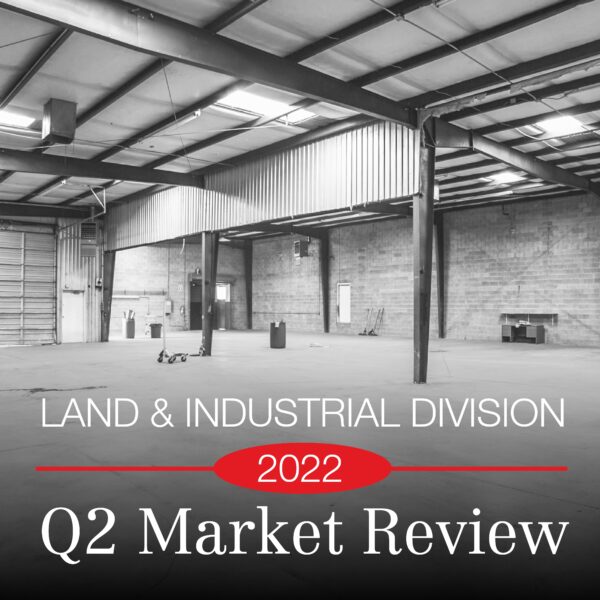Land/Industrial – 2022 Q2 Market Review
Industry News | Land & Industrial | Quarterly Reports
Vacancy stabilizes as rents increase and new construction begins
Research and Analytics provided by Riley McKee
After ten plus years of downward trending vacancy rates, the market appears to have finally bottomed out. At just slightly over 1%, though, there was not much more room for it to fall.
• As of this writing, roughly 450,000 square feet of existing, vacant space is available—a number that could double (and perhaps even triple) before robust demand would soften. Asking triple net lease rates have surged in recent months, jumping from $8.79/SF at the end of last year to $10.59/SF today. Modified Gross lease rates have all but disappeared as a category. Less than ten vacant properties are currently being marketed with that lease structure with a median asking lease rate of $11.67/SF.
• The balance between market lease rates and labor/materials costs that is necessary to make new construction viable continues to be disrupted by a bottlenecked supply chain and a low unemployment rate. While several new buildings are underway—150,000 square feet on the West Mesa and 233,000 square feet in the South Valley—others proposed have yet to break ground. The construction cost environment likely factors heavily into those projects being delayed.
• New construction of smaller scale space (10,000 square feet and below) is near nonexistent. Only one project (a 9,415 single tenant warehouse in the North I-25 corridor) has recently been completed and only one other (a 10,000 square foot office/warehouse in the North Valley) is being planned. Developers should take note of this void in the market.
• Macroeconomic trends may prove to benefit the market for leased space. The Federal Reserve’s recent 75 basis point hike—and its planned hike of similar (or greater) scale in response to June’s 9.1% consumer price index year over year increase—will continue to make borrowing more expensive and may result in a growing share of the market electing to lease space rather than purchase it.
Despite negative economic indicators the industrial real estate market in Albuquerque remains strong. Lease rates increases are the result of a low supply of space that is not being sufficiently replenished by new construction. Should a recession occur later this year or in 2023, vacancy may increase but not in an amount that would significantly reduce demand. Industrial real estate remains a top performing investment.
Download: Q2 2022 Land & Industrial Quarterly Report
The Land and Industrial Q4 market research and data is compiled by NAI SunVista commercial real estate land and industrial specialist, Riley McKee. Riley advises industrial and logistics real estate owners and occupiers on leasing, acquisitions, and dispositions.


